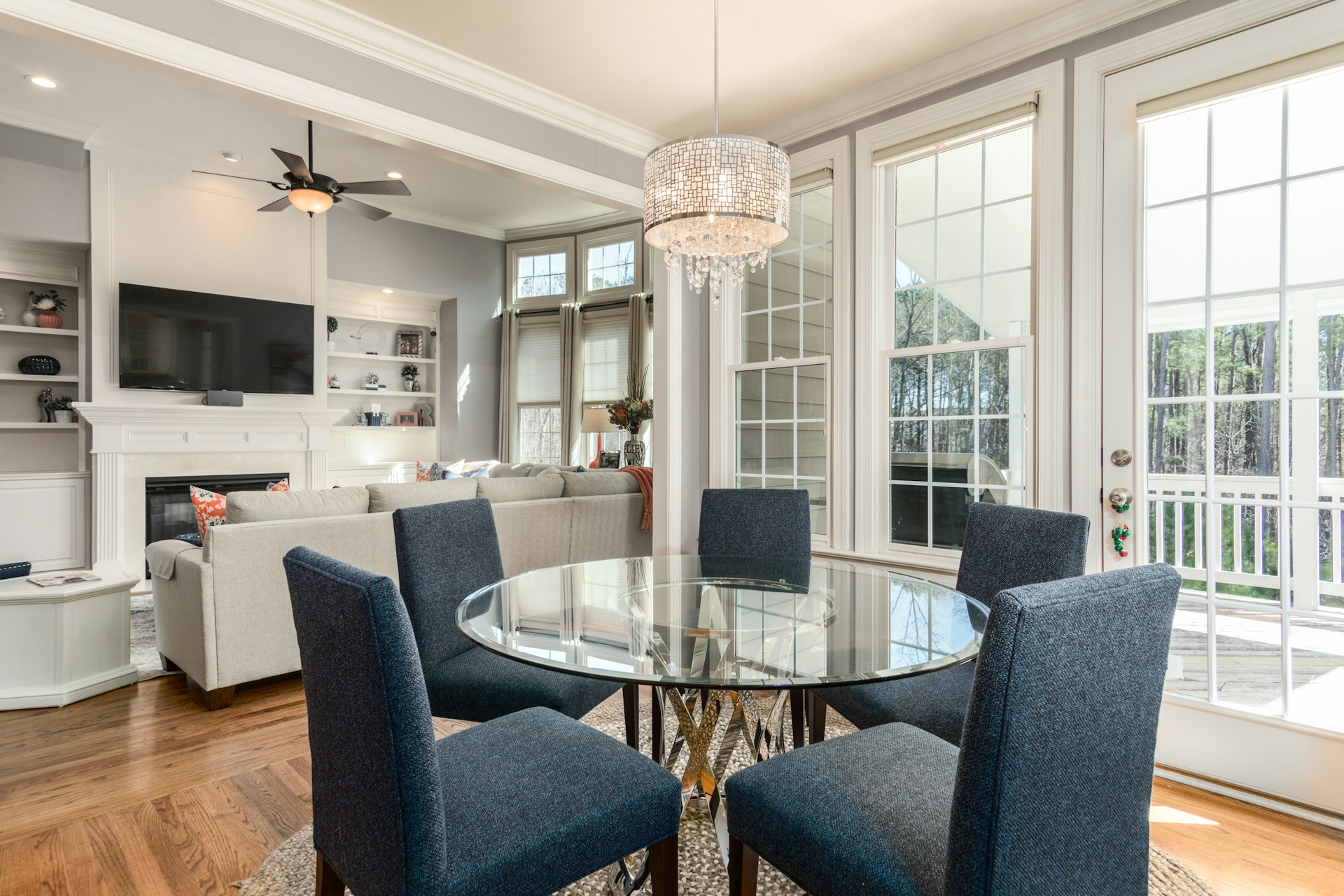
Frequently Asked Questions (FAQ) about Interior Design




What is interior design and why is it important?
Interior design is the art and science of enhancing the interior of a space to achieve a healthier and more aesthetically pleasing environment for the people using it. It involves the thoughtful planning and execution of layout, color schemes, furniture, and decorations. Interior design is important because it influences the functionality, mood, and overall experience of a space. Good design can improve comfort, increase productivity, and even positively impact mental health.
What are the key principles of interior design?
The key principles of interior design include:
Balance: Creating visual equilibrium in a space through symmetrical (formal) or asymmetrical (informal) arrangements.
Harmony: Ensuring that all elements of the design work together to create a cohesive look.
Rhythm: Using repetition and progression to guide the eye through a space.
Scale and Proportion: Ensuring that the size and proportion of furniture and décor items are appropriate for the space.
Contrast: Creating visual interest through the juxtaposition of differing colors, textures, and forms.
Functionality: Designing spaces that are practical and meet the needs of the occupants.




How do I choose a color scheme for my home?
Choosing a color scheme involves considering several factors:
Purpose of the Room: Different colors can affect mood and functionality. For example, calming colors like blues and greens work well in bedrooms, while vibrant colors like reds and oranges are stimulating and suited for social areas.
Existing Decor: Take into account existing furniture and fixtures. Choose colors that complement these elements.
Lighting: Natural and artificial light can change how colors appear. Test paint samples in different lighting conditions before making a final decision.
Personal Preferences: Your personal taste and style should guide your choices. Create a color palette that makes you feel comfortable and reflects your personality.
What are the benefits of hiring a professional interior designer?
Hiring a professional interior designer offers several benefits:
Expertise and Experience: Designers have a deep understanding of design principles, trends, and practical solutions.
Customized Solutions: They provide tailored designs that align with your needs, preferences, and budget.
Access to Resources: Designers have access to exclusive materials, furnishings, and trade discounts that may not be available to the general public.
Project Management: They handle the logistics of the design process, including coordinating with contractors and managing timelines.
Avoiding Mistakes: Their experience helps in avoiding costly design mistakes and ensures that the end result is both functional and aesthetically pleasing.




How can I incorporate eco-friendly practices into my interior design?
Incorporating eco-friendly practices involves:
Using Sustainable Materials: Opt for materials that are renewable, recycled, or have a low environmental impact, such as bamboo, reclaimed wood, or low-VOC paints.
Energy Efficiency: Choose energy-efficient lighting and appliances, and consider incorporating passive design strategies like natural ventilation and daylighting.
Recycling and Upcycling: Repurpose existing furniture and decor items or choose products made from recycled materials.
Sustainable Furniture: Select furniture from manufacturers that prioritize sustainable practices and use non-toxic finishes.
What are some current trends in interior design?
Current trends in interior design include:
Biophilic Design: Integrating natural elements and promoting a connection with nature through indoor plants, natural materials, and green walls.
Minimalism: Emphasizing simplicity and functionality with clean lines, neutral colors, and uncluttered spaces.
Smart Home Technology: Incorporating technology for improved convenience and energy efficiency, such as smart lighting, thermostats, and security systems.
Multifunctional Spaces: Designing versatile spaces that serve multiple purposes, especially in smaller homes or apartments.
Personalization: Tailoring spaces to individual tastes and experiences, creating unique and personal environments.




How do I start a home renovation project?
Starting a home renovation project involves:
Planning: Define the scope of the renovation, set a budget, and establish a timeline.
Design: Develop a design concept that includes layout, color schemes, and materials.
Hiring Professionals: If needed, hire contractors, designers, and other professionals. Get multiple quotes and check references.
Permits: Obtain any necessary permits for construction or renovation work.
Execution: Oversee the project to ensure it stays on track and make adjustments as needed.
Final Touches: Complete the renovation with finishing touches, such as decorating and arranging furniture.
How can I make a small space appear larger?
To make a small space appear larger:
Use Light Colors: Light colors reflect more light and create an illusion of space.
Incorporate Mirrors: Mirrors can reflect light and create a sense of depth.
Opt for Multi-Functional Furniture: Choose furniture that serves multiple purposes to save space.
Keep It Clutter-Free: Use storage solutions to keep the space organized and avoid clutter.
Use Vertical Space: Utilize vertical storage options and avoid heavy, bulky furniture.
What is the difference between interior design and interior decorating?
Interior design is a comprehensive practice that involves planning and creating functional and aesthetically pleasing spaces. It includes elements such as space planning, architectural details, and designing for specific functions.
Interior decorating focuses more on the surface look of a space. It involves selecting furniture, color schemes, and accessories to enhance the visual appeal but does not typically involve structural changes or detailed planning.
Inspiration
Transform your spaces with expert design insights.
info@gentlebreezedesigns.com
618-365-6642
© 2024. All rights reserved.
